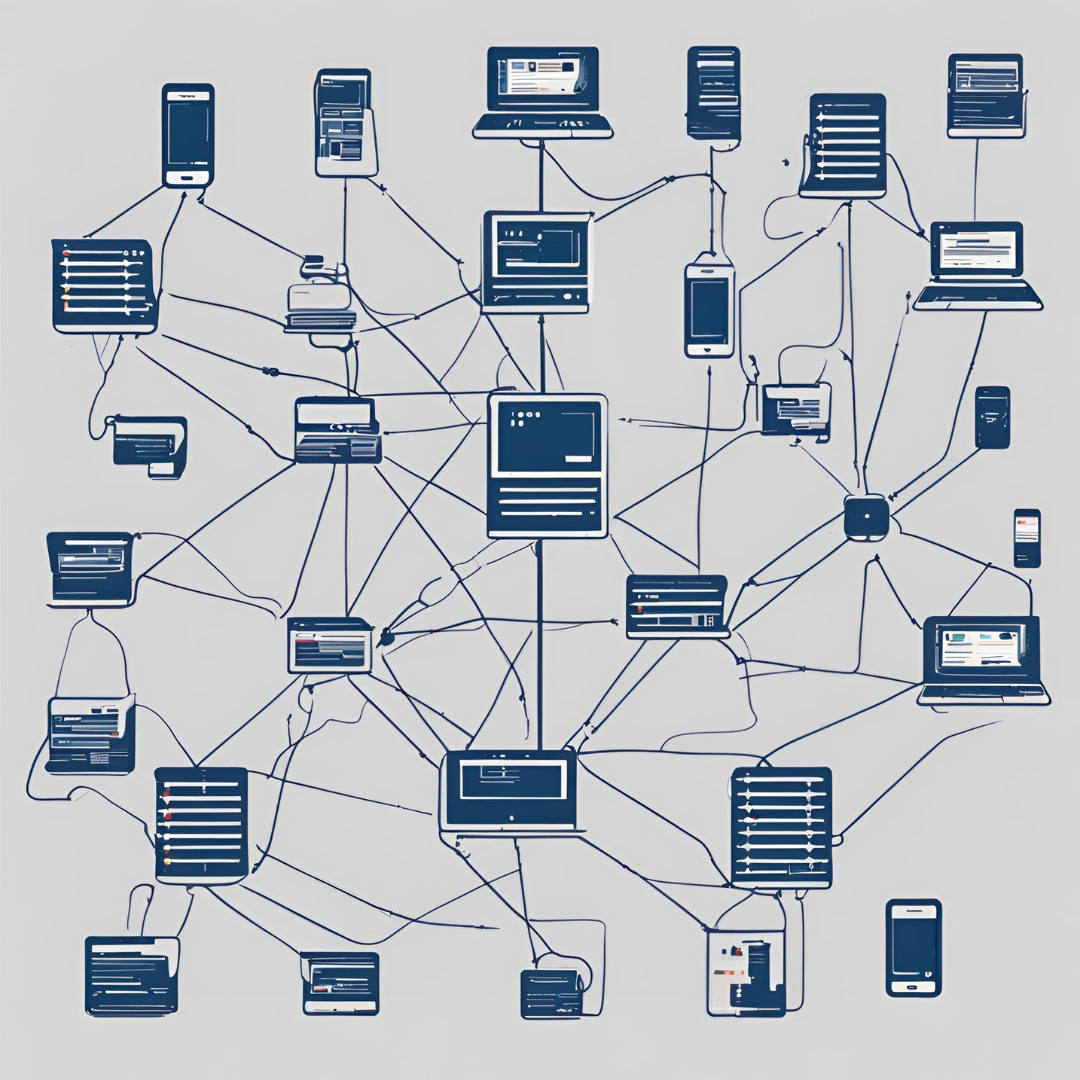Almost all technological progress depends on networks in the modern digital age. Networks allow for effortless communication, data sharing, and connection between a range of platforms, from personal devices to large-scale communication infrastructure. Society as a whole relies on networks to function. This blog explores the basic principles of networking, its development, important technologies, and the exciting possibilities for the future that could change how we communicate and interact.
Understanding the Basics of Networking
Essentially, a network consists of various interconnected devices that exchange information and resources. These devices could be anything from smartphones, tablets, and computers to servers, switches, and routers. The communication flow within networks is regulated by protocols that safeguard the security and integrity of data. This enables the smooth transfer of data between devices.
Types of Networks:
-
Local Area Network (LAN): A Local Area Network (LAN) is a type of network that links devices in a specific geographical location, such as an office, home, or school. Ethernet and Wi-Fi are the common technologies used to connect devices in a LAN.
-
Wide Area Network (WAN): A WAN is a network that covers a vast area, often spanning across various cities, states, or even countries. The internet is a prime illustration of a WAN. To create a WAN, companies usually utilize leased telecommunications lines or satellite connections.
-
Metropolitan Area Network (MAN): A MALE entity extends over a metropolitan area or expansive school grounds. Its size exceeds that of a local area network (LAN) but falls short of a wide area network (WAN). It delivers swift internet access within a limited geographical location.
-
Personal Area Network (PAN): A PAN is a compact network that facilitates communication between personal devices such as smartphones, laptops, and wearable tech, usually within a limited range of a few meters
-
Virtual Private Network (VPN): Through a VPN, you can establish a protected and ciphered link over a network that is not very secure, for instance, the internet. This technology makes it possible for users to access resources from afar while ensuring that their privacy and security are preserved.
The Evolution of Networking Technology
The evolution of networking technology has been marked by significant milestones that have transformed how we communicate and share information.
-
The Birth of ARPANET: The modern internet traces its roots back to the Advanced Research Projects Agency Network (ARPANET), which emerged in the 1960s. ARPANET pioneered packet switching technology, allowing for the swift and streamlined exchange of data between interconnected networks.
-
The Rise of Ethernet: During the 1970s, the introduction of Ethernet technology transformed LANs by offering a uniform approach to linking devices through coaxial cables. Ethernet's triumph established the foundation for the extensive use of networking in both residential and commercial settings.
-
The Internet and TCP/IP: In the 1980s, the Transmission Control Protocol/Internet Protocol (TCP/IP) was created and standardized communication between various networks. By adopting TCP/IP protocols, the internet was able to spread globally and connect a multitude of devices worldwide.
-
The Wireless Revolution: With the introduction of Wi-Fi towards the end of the 1990s, wireless networking was propelled into the spotlight, paving the way for devices to link up without the need for wires. This transformation of connectivity brought about enhanced flexibility and mobility.
-
Fiber Optics and High-Speed Networks: In the 2000s, the installation of fiber optic cables brought about a significant improvement in data transmission speeds and network reliability. Unlike traditional copper cables, fiber optics employ light to transmit data, resulting in higher bandwidth and reduced latency.
Key Technologies in Modern Networking
Modern networking relies on a suite of advanced technologies that enhance performance, security, and scalability.
-
5G and Beyond: The introduction of 5G networks will revolutionize connectivity with lightning-fast speeds, minimal delays, and vast capacity. The broad range of applications supported by 5G technology includes autonomous vehicles, smart cities, remote surgery, and augmented reality. The exploration of 6G technology suggests even more significant advancements such as terahertz communication and integrated AI.
-
Software-Defined Networking (SDN): SDN is a networking strategy that divides the control plane from the data plane. This means that network resources can be centrally managed and configured dynamically. This approach is particularly useful for modern data centers and cloud environments, as it improves network agility, scalability, and efficiency.
-
Network Function Virtualization (NFV): NFV separates network functions from specialized equipment and enables them to function as software on standardized hardware. As a result, this approach lowers expenses, boosts adaptability, and quickens the implementation of network services.
-
Internet of Things (IoT): The concept of IoT pertains to the linking of tangible objects, means of transportation, and household items that amass and share information. To accommodate the extensive data produced and guarantee safe interaction among devices, IoT networks necessitate sturdy infrastructure.
-
Edge Computing: Edge computing is a method of data processing that occurs closer to where the data is generated. This reduces the amount of time it takes for the data to be processed and transmitted, as well as the amount of bandwidth required. This is especially important for applications that require real-time data processing, like self-driving cars, industrial automation, and intelligent power grids.
-
Artificial Intelligence (AI) and Machine Learning (ML):The integration of AI and ML into network management and security is on the rise. With AI-powered analytics, network performance can be optimized, potential issues can be predicted and prevented, and cybersecurity can be strengthened by identifying and reacting to threats immediately.
Conclusion
Modern society depends on networks that facilitate communication, data exchange, and connectivity worldwide. Networking technology has come a long way since the ARPANET era, and it continues to evolve with the advent of 5G and beyond. These advancements have changed the way we live, work, and interact with each other. Looking ahead, AI, quantum networking, and edge computing present additional opportunities for innovation and will further shape the digital landscape. To stay ahead of the digital revolution, it's crucial for businesses, governments, and individuals to embrace these technologies.





Leave a Reply